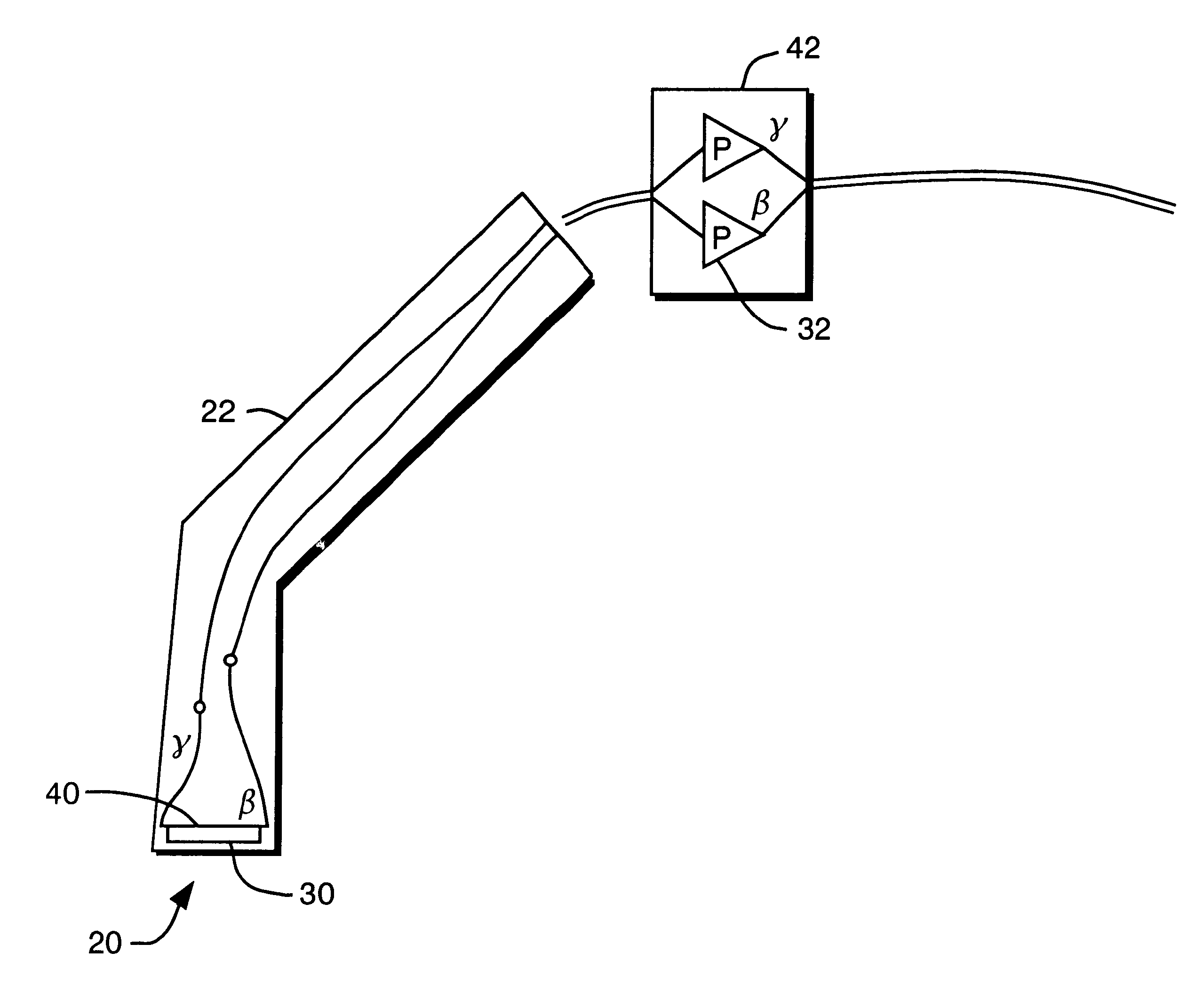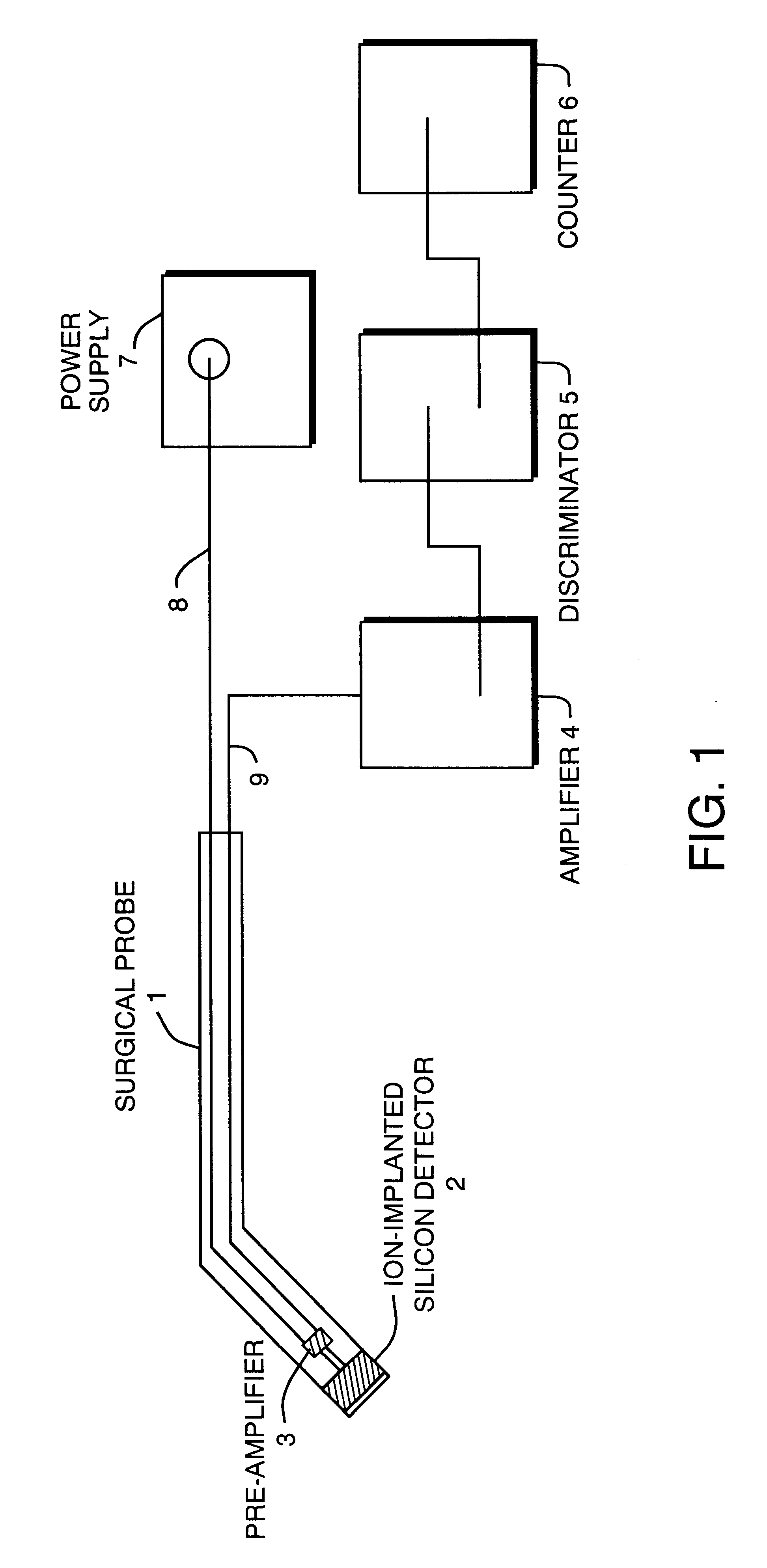Solid state beta-sensitive surgical probe
a beta-sensitive, surgical probe technology, applied in the direction of instruments, applications, x/gamma/cosmic radiation measurement, etc., can solve the problem of devices being highly susceptible and not, and achieve the effect of minimizing the requisite size of the probe instrument itself and being highly sensitiv
- Summary
- Abstract
- Description
- Claims
- Application Information
AI Technical Summary
Benefits of technology
Problems solved by technology
Method used
Image
Examples
example 2
Simulation of Surgical Field Following Excision
To test the effectiveness of the IISD in a search for the presence of residual diseased tissue left in the surgical field following attempts at excision, a surgical field following attempted lesion excision was simulated. Differing amounts of residual tumor were modeled by soaking various sized disks (2 mm, 5 mm, 10 mm and 15 mm diameter) in a solution of .sup.18 F (concentration=22.2 kBq / ml; simulating an SUV of 4.2 assuming a 370 MBq infusion and a 70 kg patient). To model exposed normal tissue present in the tumor bed, a piece of filter paper (7 cm.times.3 cm) was soaked in a solution of .sup.18 F (concentration=5.2 kBq / ml; simulating an SUV of 1, assuming a 370 MBq infusion and a 70 kg patient) and mounted on similar sized piece of tissue equivalent plastic (Gammex RMI; Madison, Wis.).
In order to simulate the background photon signal emanating from distant areas of normal tissue, a large petri dish (volume=300 ml, diameter=14 cm) wa...
example 3
Utilizing Stacked Detectors
FIGS. 8 and 9 illustrate an alternative and preferred embodiment of the beta probe of the present invention. In this design, a pair of semiconductor detectors 30 and 40 are "stacked" one behind the other in the tip of the probe 20, placed in a housing, 22, as shown in FIG. 8, with the front detector 30 serving as a beta shield for the rear detector 40. Although a pair of ion-implanted silicon detectors are utilized in a particularly preferred embodiment, it is contemplated that any matching pair of semiconductor-based detectors can be advantageously used in the dual-detector design of the present invention, including surface barrier detectors, since the dual detector design itself significantly reduces the effects of background photons and gamma rays.
As noted previously, it is contemplated that both detectors 30 and 40 can be biased using the same power supply, and that the resulting signal from each detector will be processed individually. Therefore, in t...
PUM
 Login to View More
Login to View More Abstract
Description
Claims
Application Information
 Login to View More
Login to View More - R&D
- Intellectual Property
- Life Sciences
- Materials
- Tech Scout
- Unparalleled Data Quality
- Higher Quality Content
- 60% Fewer Hallucinations
Browse by: Latest US Patents, China's latest patents, Technical Efficacy Thesaurus, Application Domain, Technology Topic, Popular Technical Reports.
© 2025 PatSnap. All rights reserved.Legal|Privacy policy|Modern Slavery Act Transparency Statement|Sitemap|About US| Contact US: help@patsnap.com



